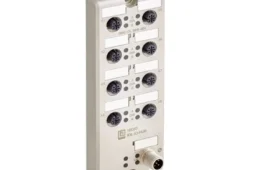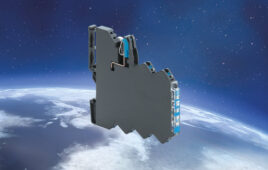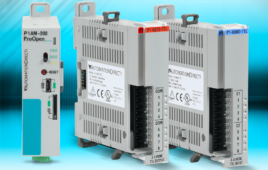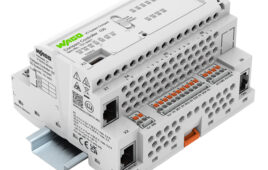By Dr. Chris Lawrenson & Mark Valentino
Dr. Chris Lawrenson is the Lead Acoustic Engineer PCB Piezotronics, Inc.
Mark Valentino is the Acoustic Product Manager PCB Piezotronics, Inc.
Industry standards establish performance requirements, dimensions, and characteristics for not only microphones, but also sound level meters, calibrators, and other related measurement components. The most widely recognized organizations responsible for these standards include the American National Standards Institute (ANSI) and the International Electrotechnical Commission (IEC.)
The American National Standards Institute’s ANSI S1.4 standard is a specification for sound level meters. It was written in 1983 and later amended to S1.4A in 1995, which is used today. A companion standard, ANSI S1.43, was established in 1997 and written for integrating-average sound level meters.
Similarly, the International Electrotechnical Commission produced several standards, including IEC 60942 that was created for three classes of sound calibrators. The Laboratory Standard (LS) class has the tightest tolerances and is designated for calibrators that are used only in the laboratory. Class 1 and 2 instruments are intended for field applications. A class 1 calibrator is intended to be used with a class 1 sound level meter, and a class 2 calibrator is designed to be used with a class 2 sound level meter.
The IEC 61094 standard deals with condenser microphones. It establishes specifications for mechanical dimensions and certain electro-acoustic characteristics for standard microphones that are used as laboratory reference microphones. These condenser microphones require the highest accuracy because they determine the primary calibration accuracy of other microphones.
Finally, IEC 61672 provides electro-acoustical standards for sound level meters and replaces standards 60651 and 60804. They include the simplest integrated sound level meters that measure sound-exposure levels, those that measure time-average sound levels, and conventional units that measure exponential, time-weighted sound levels. A sound-level meter can handle one, all, or a combination of the above measurements. Moreover, sound-level meters fit two classes: The standards are based on the same design characteristics, but differ in tolerance limits and operational temperature specifications. To conform to class 1 or class 2, a certain frequency response is specified for sound in an acoustic field , which is incident on the microphone from one source and direction, or from random directions. Class 2 tolerances are more liberal than the class 1 standards.
Certain classifications are often referenced such as those ranging from Type 0 through Type 2 that dictate the tolerance and accuracy of the microphone system. These standards were developed for sound-level meters and are commonly applied to components of a system such as the microphone cartridge and the preamplifier. Type 0 refers to Laboratory Standards. Although it does not have to satisfy the environmental requirements for field instruments, it must be extremely accurate, since it is the standard for comparing and testing other microphones. Type 1 is for both laboratory and field use and is extremely accurate and durable. It can survive tough environments and compile highly accurate and reliable acoustic measurements. It is widely used for research and design engineering. By comparison, Type 2 microphones are general-purpose and have standards that are more relaxed and easily achieved. These microphones do not have the high-frequency response, low cartridge thermal noise levels, or accuracy as the first two types, but they offer a less expensive alternative when measurement accuracy is not critical.
Some manufacturers designate their microphone, preamplifier, or filter as a certain type or to meet a particular standard. In order to conform, the whole system must meet the standard, not just one component. Each individual component of the microphones discussed here (including tolerance accumulation) exceeds the specifications, so it meets the Type 1 specifications when installed. For more information on these standards, contact the above organizations. They can answer your questions and provide documentation for specific standards.
After selecting the microphone and corresponding preamplifier, ancillary equipment must be specified and installed such as cables, power supplies, signal conditioners, and data acquisition systems. However, not all of these components are required for all test set-ups. For example, prepolarized microphones can be used with a preamp and power supply combination that is intended for externally powered microphones, but the supply voltage must be set to zero.
Applications
Acoustical testing satisfies a variety of goals; to design and monitor new products, to establish predictive maintenance schedules, and for personal protection. Some typical applications, such as acoustical studies that require microphones may include:
Research and product design – Excessive sound pressure can damage products or human hearing. Microphones are used to measure the pressure level exerted on a surface, door slam and clutch engagement sounds, vehicle starter impact noise, and automobile sunroof noise. Engine noise reaching a car interior, or sound generated from a consumer appliance are measured and analyzed so methods can be found to extend the lifespan of the product and minimize the external noise that can harm or irritate users.
Preventive maintenance – Increased sound levels, or frequency variations can indicate that a product is not working to its capacity. For example, motors, gears, bearings, blades, or other industrial components can change intensity levels or shift frequencies when not working properly. High precision microphones can confirm that a product is experiencing a problem or predict a component failure.
Audiometric calibration – Many universities, governments, and companies use audio testing equipment to perform hearing tests and research projects. Microphones test and calibrate the systems to ensure the accuracy of the test equipment meets specifications.
Compliance – Microphone tests and sound level meters can record and verify pressure levels on products for compliance to specifications during design. Also, they can be used to measure noise levels that exceed legal requirements for safety such as ensuring compliance with national standards for shop noise.
Environmental noise analysis – The human ear can be subjected to certain sound pressure levels for specific amounts of time (called a dose) before ear damage occurs. A few sources include industrial shop noise, airport noise, and automotive highway noise. Acoustic testing can lead to a better understanding of the sound levels that are experienced in these surroundings, and make the necessary adjustments to provide better personal protection. For instance, automotive firms use high-precision microphones for “squeak and rattle” tests in order to provide a quieter ride.
Multiple channel testing – Microphones are being increasingly used in acoustic holography and pressure mapping. Grids of microphones can be set-up to report the difference in the sound pressure at different points around an engine or a car tire well and calculations can be made per zone or spectrum. Some applications monitor seismic activity, track satellites, and identify automotive and industrial noise sources. In addition, microphones that use appropriate signal conditioning and basic wave equations can transform 2D complex sound pressure information into 3D acoustic fields to indicate surface intensity and radiation patterns.
Microphone and preamplifier maintenance
Microphones are typically stable over long periods, but their components are fragile and can be damaged when misused. For example, the diaphragm comprises an extremely thin material that should be kept free of dust, dirt, moisture, and imperfections such as scratches or dents. The grid cap is designed to pass the true sound pressure level but not let foreign material contact the diaphragm.
Under ordinary conditions, the grid cap should not need to be removed nor should the microphone need to be cleaned. However, when either action must be done, use an alcohol-wetted, soft cotton swab. The alcohol must be fully dried before supplying microphone power. Also, do not touch the microphone diaphragm or let it contact any sharp or pointed object. Accessories, like windscreens and desiccants, help prevent moisture contamination and maintain the specified microphone sensitivity level. Nose cones also help prevent turbulence from reaching the microphone diaphragm but let the sound pressure level enter unobstructed.
Dust and dirt not only adversely affects microphone performance, but also the preamplifier. If dirt or dust enters the backside of the microphone or inside the connection area of the preamplifier, use a rubber bulb to blow clean, dry air into the unit. Keep the microphone and preamplifier assembled while preparing for testing. Also, retain the maintenance caps and store the microphones in protective cases when not in use.
Latest and future developments
Manufacturers are now focused on producing more diverse prepolarized microphones so users can select one from a wider variety and match traditional microphones for different applications.
The increasing interest in Near-field Acoustic Holography (NAH) has encouraged manufacturers to design array microphones for large channel counts and improve ancillary equipment. Array grids in both stationary and linear guided systems are becoming increasingly widespread. This trend has also promoted new software systems for sound pressure mapping, large channel signal conditioning units, and newer readout and data acquisition systems that can handle the increased inputs and necessary data output.
Advanced sound level meters are widely used in the healthcare and industrial markets. Users demand products that are mobile, easy to use, and come in one battery operated, hand-held unit that does not require assembly for daily usage. Sales of this product group continue to be strong, and future developments will be in the expanded software systems and products made for specific target applications.
Transducer Electronic Data Sheets (TEDS) are preferred with the rise in large channel-count tests that require accurate results on a consistent basis. TEDS systems make it easy to manage large numbers of microphones by letting users locate a specific microphone within a group. Data storage, calibration historical information, and physical characteristics of each microphone and preamplifier are easily retrieved. Software and data acquisition companies are producing more products that take advantage this technology, so that the consumers can reap the rewards. They are requesting smaller packages that measure sound pressure levels accurately and make their jobs easier and quicker to set-up and record data – at low cost. And the manufacturers continue to design products that offer the customer the best value for the application.
PCB Piezotronics
www.pcb.com
: Design World :
Filed Under: TEST & MEASUREMENT





Tell Us What You Think!